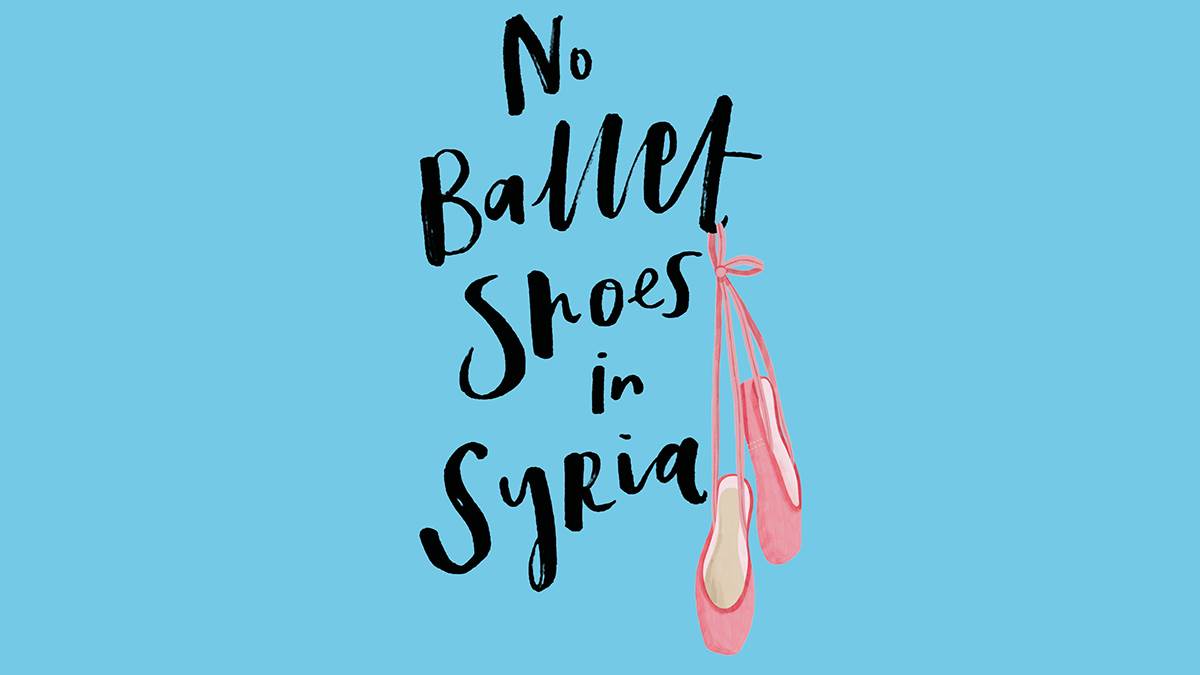'Is this my story to tell?' Catherine Bruton on writing the tale of a Syrian refugee
Published on: 16 June 2019 Author: Catherine Bruton
Catherine Bruton felt inspired to write the story of a Syrian refugee in her new book - but how could she tell it properly? She tells us how she approached No Ballet Shoes in Syria...

Illustration: Kathrin Honesta
Cultural appropriation is a big term for a writer who stands at barely five foot (and half an inch!) in her slippers, but it's one I wrestled with as I embarked on writing No Ballet Shoes in Syria.
It's the story of 11-year-old Aya, who comes to Britain, along with her mother and baby brother, as a refugee from Syria. When she stumbles across a local ballet class, the formidable dance teacher, Miss Helena, spots Aya's remarkable natural talent and believes she has the potential to win a scholarship to the prestigious Royal Northern Ballet School. But at the same time Aya and her family must fight to remain in the UK, to make a new home for themselves, and to find Aya's father – who was separated from the family during the perilous journey from Syria.
The tale was inspired by watching heart-breaking news stories about child migrants fleeing Syria, and by hearing When Hitler Stole Pink Rabbit author Judith Kerr talking about the parallels with her own story of escaping from the Nazis as a child.
But it was also inspired by my love of classic children's stories such as Noel Streatfeild's Ballet Shoes, The Swish of the Curtain by Pamela Brown, Lorna Hill's Sadler's Wells series (each of which I read more times than I can count!) and Ian Serraillier's The Silver Sword.
And most of all, it was inspired by the stories I heard when talking to members of the Syrian community in the UK, and by organisations such as Bath Welcomes Refugees and other resettlement projects in my local area.
Was I stealing someone's story?
And yet, despite all those influences, still I struggled for a long time to find Aya's voice. It eluded me - sometimes she was there, clear as a bell, and then she would slip away. I think that is because for a long time I was struggling with one of the biggest questions a writer has to face: is this really my story to tell?
That's what I mean by cultural appropriation – was I appropriating someone else's story, stealing their narrative, taking their voice?
The answer is both no and yes. It's not my story: it's the story of 11.5 million refugee children around the world today.
It's the story of the incredible families brave enough to embark on perilous journeys – through refugee camps, across the Mediterranean, in containers, facing dangers and deprivation - to make a new life for themselves. And I hope – I really hope - that one day we will hear the stories of child migrants told by those who lived through it.
But right now, as a father from Aleppo said to me, those children have no voice. And I suppose that's what I wanted to give them. I wanted to write a story which would give children like Aya a voice.
A responsibility to change the narrative
When you turn on the news and see a child who has escaped the war in Syria, only to be beaten up in a school in the UK, you realise how important it is for stories to challenge the toxic definitions that have become attached to words like 'refugee' and 'asylum seeker'. Books can help achieve that by giving voice to the experience of those who cannot make themselves heard.
So maybe it isn't a question of whether we as authors have the right to tell certain stories - but of our responsibility to do so.
But I didn't take that responsibility lightly. My earliest experiences as a teacher in Africa were with refugees from Angola, East Germany and Rwanda, and I have also worked with children seeking asylum in the UK.
Those voices helped me connect with Aya's voice, along with the voices of child refugees from current conflicts whose stories I encountered through the British Refugee Council and other charities. I worked with members of the Syrian community who read the manuscript to ensure the details were authentic, because I think if you are going to try to tell someone's story you need to do it as truthfully and accurately as you can possibly manage.
I did my best. Of course in the end, I can only imagine what it must have been like for Aya and her family.
But that's also what this story - and other stories dealing with similar themes - ask young readers to do. To take a leap of imagination, to jump into someone else's shoes, to see the world through their eyes.
A member of the local Syrian community who read No Ballet Shoes in Syria thanked me for 'bearing witness' and 'ensuring the stories are remembered and shared'. I felt humbled and, yes, relieved. Because this is a story that is happening now – to children across the world and in the UK, and so I was desperate to do it justice.
I loved finding Aya's voice, and if a young girl like her could pick up my book and see her story told – one in which she is not the victim but the heroine – and feel that I have in some way given her a voice, then I will have done what I set out to do.






Add a comment